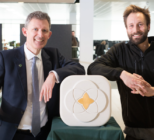Research commissioned by specialist insurer Ecclesiastical and The Heritage Alliance has revealed the majority of Britain’s heritage organisations are promoting and prioritising wellbeing.
The survey, carried out pre-lockdown, discovered two-thirds (69%) of heritage organisations prioritise wellbeing as an outcome of their work, while two in five (40%) say wellbeing is ‘extremely’ or ‘very’ prioritised as the outcome of their work.
Four in five (84%) heritage organisations surveyed promote themselves as an organisation that cares about wellbeing, while more than half (55%) do so ‘always’ or ‘frequently.’
In 2019, The National Lottery Heritage Fund introduced a new focus on wellbeing as part of its strategic funding framework. A new outcome, “people will have greater wellbeing”, was included and the Fund now gives priority to organisations that can demonstrate a good track record of working towards this outcome.
Wellbeing at the heart of heritage organisations’ strategy and objectives
The survey revealed half (50%) of organisations say wellbeing is one of their objectives and almost half (48%) include wellbeing in their strategy.
Two in five (42%) heritage organisations feature wellbeing as part of their planning, while more than a third (35%) of heritage organisations include wellbeing as part of their mission statement.
How heritage organisations are improving people’s wellbeing
The survey found heritage organisations are offering a wide range of wellbeing activities including art therapy, Pilates, yoga, mindfulness and forest bathing.
The top five ways heritage organisations say they improve people’s wellbeing are by:
- Providing learning opportunities (72%)
- Helping people to socialise (53%)
- Helping people build social connections (51%)
- Helping people stay mentally active (50%)
- Helping people stay physically active (48%)
Manchester Art Gallery is an example of an organisation that has a strong focus on wellbeing and improving people’s mental health. The gallery describes itself as “a place where you can go to look after your mental health”. The institution has a health and wellbeing manager and hosts a variety of wellbeing initiatives including free public workshops that explore artworks using mindfulness.
The Beaney House of Art and Knowledge in Canterbury promotes itself as “a therapeutic museum that can help improve your health and wellbeing”. The Beaney has an extensive health and wellbeing programme which includes weekly mindfulness sessions and monthly sessions of gallery visits, object handling and socialising for people and their companions affected by dementia or social isolation.
Faith Kitchen, heritage director at Ecclesiastical, said: “As the leading insurer of Grade I listed buildings in the UK, from castles and contemporary heritage and homes to cathedrals and churches, we’re passionate about protecting Britain’s heritage. It’s interesting to see the majority of Britain’s heritage attractions are prioritising and promoting wellbeing. Our research shows many heritage organisations are delivering incredible projects to enhance people’s wellbeing and improve mental health.”
Lizzie Glithero-West, CEO of the Heritage Alliance, adds: “This research illustrates the crucial role the heritage sector will play as we emerge from lockdown. The wellbeing of our communities is intertwined with our heritage and we are firm believers in the power of heritage to solve a host of public policy challenges. We will be showcasing this in more detail in our upcoming report on heritage and wellbeing.
“Case studies such as Alexandra Palace’s Wild in the Park initiative, which helps children and young people engage with the natural environment of the park, and the Grantham Canal Heritage Initiative, a volunteer-led restoration of two of the oldest locks of the canal, demonstrate the long-lasting power of heritage in supporting wellbeing. Projects provide training, a sense of community and a shared goal for local volunteers who are the foundation of the Heritage sector, alongside multiple physical and mental benefits.”










